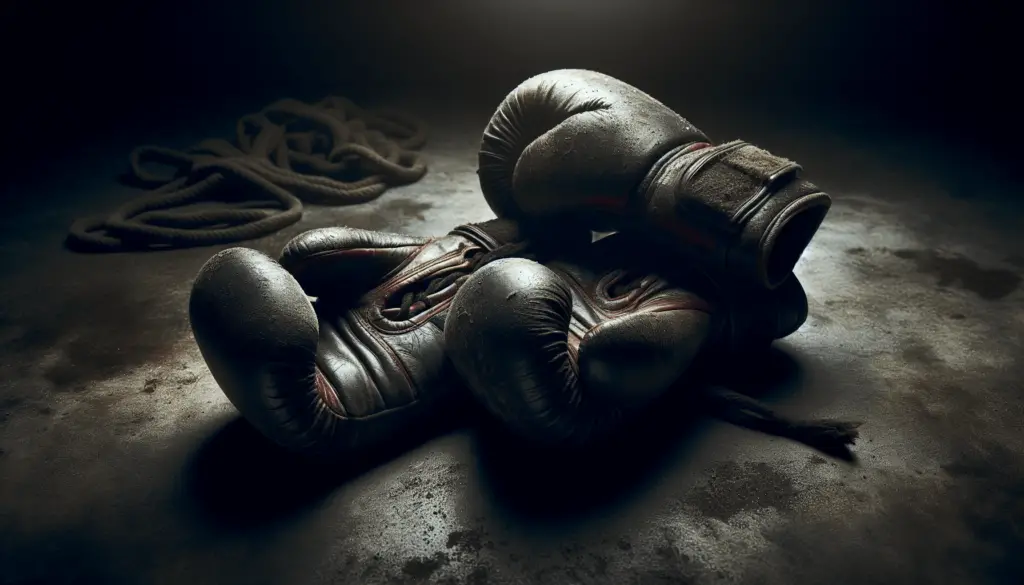If you’ve ever found yourself feeling vulnerable or concerned about your personal safety, then learning essential self-defense skills is a must. Whether you’re a man or a woman, young or old, it’s important to equip yourself with the knowledge and techniques to protect yourself in potentially dangerous situations. This article will explore the essential self-defense skills that everyone should learn, providing you with practical tips and empowering you to feel more secure and confident in your daily life.
Awareness and Avoidance
Self-defense begins with awareness and avoidance. Understanding situational awareness is crucial in recognizing potential threats and avoiding dangerous situations. Situational awareness involves being alert and observant of your surroundings at all times. By paying attention to your environment and the people around you, you can identify any potential threats or suspicious activities.
When it comes to identifying potential threats, it is important to trust your instincts. If you feel uneasy or notice someone acting suspiciously, it’s essential to take appropriate precautions. Avoiding dangerous situations involves making smart decisions, such as staying in well-lit and populated areas, walking with confidence, and staying away from isolated or unfamiliar places, especially at night.
Managing personal space is another important aspect of awareness and avoidance. Maintaining a safe distance from strangers and setting clear boundaries can help deter potential attackers. It is crucial to be assertive and confident in communicating your boundaries without being rude or aggressive.
Verbal Communication and De-Escalation
Effective verbal communication is a crucial self-defense skill. Using assertive communication techniques can help defuse conflicts and avoid physical altercations. Assertive communication involves expressing your thoughts, opinions, and boundaries in a clear, respectful, and confident manner.
In addition to assertive communication, de-escalation techniques are essential in diffusing tense situations. By remaining calm and composed, you can help prevent conflicts from escalating. It’s important to listen actively to the other person, show empathy, and try to understand their perspective. Understanding body language can also be helpful in recognizing signs of aggression or tension and adjusting your approach accordingly.

Physical Conditioning and Fitness
Physical conditioning and fitness play a crucial role in self-defense. Building strength and stamina through regular exercise helps improve your overall physical capabilities. Strength training exercises such as weightlifting and bodyweight exercises can enhance your ability to defend yourself against physical threats.
Flexibility and agility are also important aspects of physical conditioning. Stretching exercises and activities like yoga or martial arts can improve your flexibility, allowing you to move more freely and effectively in self-defense situations. Agility exercises, such as ladder drills or agility ladder training, can enhance your quickness and responsiveness.
Developing overall fitness is not only beneficial for self-defense but also for overall health and well-being. Engaging in cardiovascular exercises such as running, swimming, or cycling helps improve endurance and cardiovascular health, allowing you to better handle physically demanding situations.
Enhancing reaction speed is another important element of physical conditioning for self-defense. Practicing drills that challenge your reaction time, such as partner drills or using reaction balls, can improve your ability to respond quickly and effectively to threats.
Basic Strikes and Strikes Defense
Learning basic strikes and strike defense techniques is essential for self-defense. Punches, kicks, and elbow strikes are effective striking techniques that can be used to immobilize or incapacitate an attacker. Training in martial arts or self-defense classes can provide you with the necessary skills and techniques to deliver powerful and accurate strikes.
Equally important is learning blocking and parrying techniques to defend against strikes. By properly blocking or redirecting incoming strikes, you can minimize the impact and potential harm to yourself. It is vital to practice these techniques to develop muscle memory and improve your reflexes.
Understanding effective striking targets is crucial for maximizing the impact of your strikes. Targeting vulnerable areas such as the eyes, nose, throat, or groin can significantly incapacitate an attacker and provide you with an opportunity to escape.
Counter-attacks are an essential component of strike defense. By capitalizing on openings or weaknesses in an attacker’s defense, you can effectively turn the tide of an altercation. Learning and practicing counter-attacks can give you an advantage in self-defense situations.

Ground Defense and Escapes
Familiarizing yourself with ground defense and escape techniques is crucial, as many altercations can end up on the ground. Learning proper falling techniques and break-falls can help minimize the risk of injury when taken to the ground.
Defensive maneuvers from the ground involve techniques such as bridging, shrimping, or using your legs to create distance between yourself and the attacker. By employing these techniques, you can neutralize the threat and create room for escape.
Escaping from holds and grabs is another important aspect of ground defense. Techniques such as joint locks, pressure points, or striking vulnerable areas can help break free from an attacker’s grip. Combined with effective ground movement and positioning, these techniques can give you an advantage in a ground-based confrontation.
Joint Locks and Manipulation
Understanding joint mechanics is fundamental for using joint locks and manipulation as a self-defense technique. Joint locks involve applying controlled pressure to immobilize an attacker by exerting leverage on their joints. These techniques can be effective in neutralizing the threat without causing significant harm.
Escaping from joint locks is also essential to know in case you find yourself on the receiving end of such an attack. Learning effective escape techniques can help you break free from an attacker’s hold and regain control of the situation.
Using joint manipulation for control is another aspect of self-defense. By understanding how to manipulate an attacker’s joints, you can exert control over their movements and neutralize their ability to harm you. However, it is crucial to use these techniques responsibly and proportionally, considering the potential risks and legal implications.
Pressure Points and Pain Compliance
Identifying vital pressure points on the body is valuable in self-defense situations. These pressure points, such as the temples, neck, or groin, are areas that, when targeted effectively, can cause pain and temporarily incapacitate an attacker.
Techniques to exploit pressure points involve applying the right amount of pressure or striking these points accurately. These techniques can serve as a valuable tool in gaining control over an attacker or creating an opportunity to escape.
Controlling an attacker through pain compliance is another use for pressure points. By leveraging an attacker’s response to pain, you can influence their compliance and reduce the threat they pose. However, it is crucial to understand the legal considerations and responsible use of these techniques, as excessive force can have legal repercussions.
Defense against Weapons
Knowing how to defend against various weapons is essential for self-defense. Knife defense techniques involve learning how to minimize the risk of injury and disarm an assailant armed with a knife. By understanding defensive techniques such as deflection, redirection, or disarming, you can increase your chances of effectively protecting yourself.
Defense against blunt objects involves techniques such as blocking, evading, or using one’s body as a shield to absorb impact. These techniques aim to minimize the force and potential harm caused by blunt objects such as bats or clubs.
Disarming an armed assailant requires a combination of technique, timing, and situational awareness. Learning how to safely and efficiently disarm an attacker is a valuable skill that can potentially save lives.
In the event of encountering firearms, it is crucial to prioritize personal safety and follow the instructions of law enforcement or trained professionals. Understanding how to safely navigate such situations can significantly reduce the risk of harm.
Awareness of Legal Constraints
While self-defense is an important skill to possess, it is essential to be aware of legal constraints. Understanding self-defense laws is crucial in knowing your rights and responsibilities. Familiarize yourself with local laws regarding the use of force and the boundaries of self-defense.
Differentiating self-defense from aggression is necessary to ensure that your actions are justified and lawful. Self-defense involves protecting yourself or others from imminent harm, while aggression involves initiating violence without just cause. It is crucial to act within the confines of the law and only use force when necessary and proportional to the threat.
Knowing when and how to use force is a critical aspect of self-defense. Understanding the concept of imminent threat and when it is appropriate to use force can help you make better decisions in high-pressure situations. Remember, the goal of self-defense is to protect yourself and avoid unnecessary harm, not to cause harm.
Understanding your legal obligations and potential repercussions is essential. Consult local legal resources or seek advice from legal professionals to ensure that you have a clear understanding of the legal framework surrounding self-defense in your jurisdiction.
Rehearsing and Regular Practice
To truly develop and maintain self-defense skills, regular practice and rehearsal are necessary. Simulating real-life scenarios can help you prepare mentally and physically for potential threats. Practice defensive techniques such as strikes, escapes, or joint locks in training environments that mimic real-life situations.
Rehearsing responses under stress is crucial to ensure that your skills are effective even in high-pressure situations. By practicing under conditions that replicate real-life stressors, such as time constraints, physical exhaustion, or verbal aggression, you can build the mental and emotional resilience needed for effective self-defense.
Maintaining consistency in training and skill improvement is essential. Regularly attending self-defense classes or training sessions, keeping up with physical conditioning exercises, and seeking opportunities to enhance your skills can help ensure your continued growth and readiness.
In conclusion, self-defense encompasses a range of skills and techniques that everyone should learn. From situational awareness and avoidance to verbal communication, physical conditioning, strikes, defense against weapons, and understanding legal constraints, each aspect plays a vital role in effective self-defense. By developing these skills and regularly practicing them, you can better protect yourself and others in dangerous situations. Remember, self-defense is not about seeking confrontation, but about staying safe and avoiding harm whenever possible.
